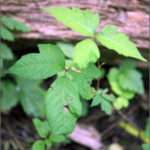Mention “poison ivy” in any group, and you’ll probably hear a groan and an anecdote or two about this infamous plant.
Most Americans grew up hearing one or more myths about it. Here are the most frequent myths about the plant as well as the facts for each topic.
Myth #1: Poison ivy is contagious.
Fact: Most people heard this as children. It’s partially false. According to the website for Pennsylvania’s Cook Forest State Park, by the time a rash appears, the urushiol oil that causes so much discomfort when someone contracts this condition has been either absorbed into your skin or washed away. The poison ivy rash by itself is not contagious. Rubbing it won’t spread the oil to others or even to other parts of the body. However, any oil stuck to clothing, pets, furniture or your skin before the rash appeared can rub off onto other parts of your body or onto other people. When this happens, rashes appear in odd places, and sufferers conclude that the initial rash must have been contagious.
Myth #2: Just being near the plants can give a person poison ivy.
Fact: Mostly false. In order to contract this skin condition, you must come into direct contract with urushiol oil. It’s possible, though, for the oil to become airborne, so cutting your grass could put you at some risk.
Myth #3: “Leaves of three, let them be.”
Fact: Wrong. This old saying advises us to only steer clear of any plant with three leaves. It applies to poison oak plants, too. However, poison sumac has 7 to 13 leaves per stem.
Myth #4: Dead plants and fallen leaves pose no problem.
Fact: This one is also false. Urushiol oil can stay active on any surface for up to five years. If you touch a dead plant or a fallen leaf with active oil, you can catch poison ivy from it.
Myth #5: You can spread the oil by breaking poison ivy blisters.
Fact: Nope. Urushiol oil doesn’t spread this way. However, you should be aware of the possibility of infection and scarring. If you’re experiencing fluid buildup, you should see a doctor.
Myth #6: Poison oak causes more blisters and a worse rash than poison ivy does.
Fact: False again. Many people believe they can identify poison oak as the culprit of their discomfort just by the severity of the rash. Actually, poison ivy, poison oak and poison sumac all cause similar poisoning effects, according to the Pennsylvania Integrated Pest Management Program (PAIPM). Part of the reason for this belief is that poison ivy grows in several forms. It can be present as a shrub or a creeping vine or spread over the ground by rhizomes. Some of its leaves are more toothed than others and somewhat resemble poison oak. You can identify poison ivy by noting that its compound leaves are always arranged alternately on the stem, with three leaflets. The stem of the middle leaflet is longer than those of the other two leaves.
Myth #7. Eating the plant will protect you from it in the future.
Fact: Not a chance. As a matter of fact, it can cause a serious reaction leading to a fatality.
Myth #8. Some people are immune to poison ivy.
Fact: This one is basically true – at least in childhood. But many exposures to the oil can speed the process of becoming sensitive to the plant as the years pass. By the teens, most “immune” individuals are actually sensitive to the plant and will continue to react to it as adults.
Myth #9. There’s no magic cure.
Fact: True. The episode usually clears up in one to three weeks. Various over-the-counter and home remedies can help put a lid on the itching and make you more more comfortable. For widespread or very severe cases, though, you’ll need to see a doctor. He or she will probably prescribe some type of a short-term oral corticosteroid like prednisone.
Reference:
- Cook Forest State Park web site
- Pennsylvania Integrated Pest Management Program (PAIPM) web site



